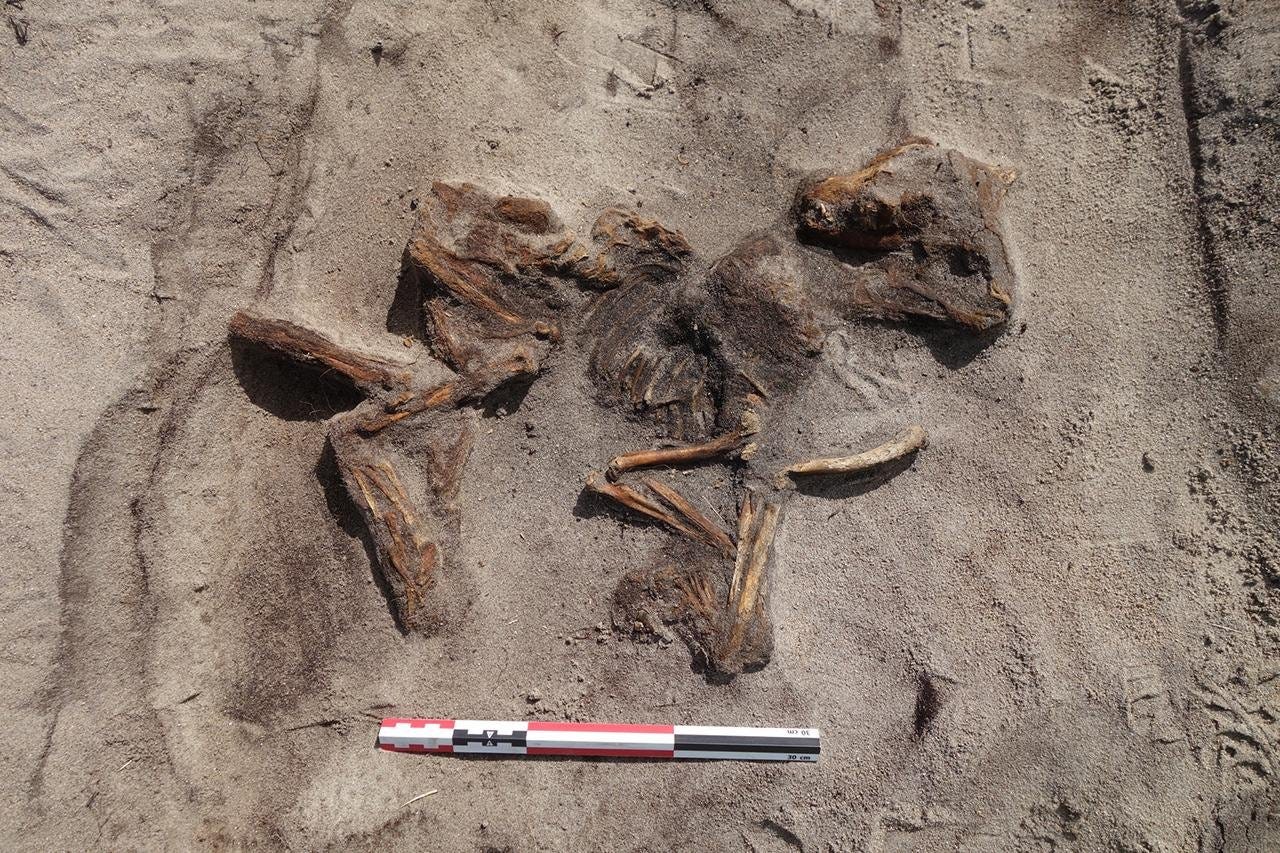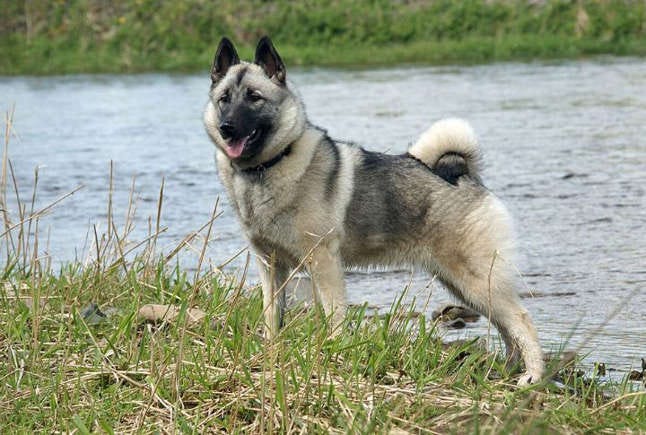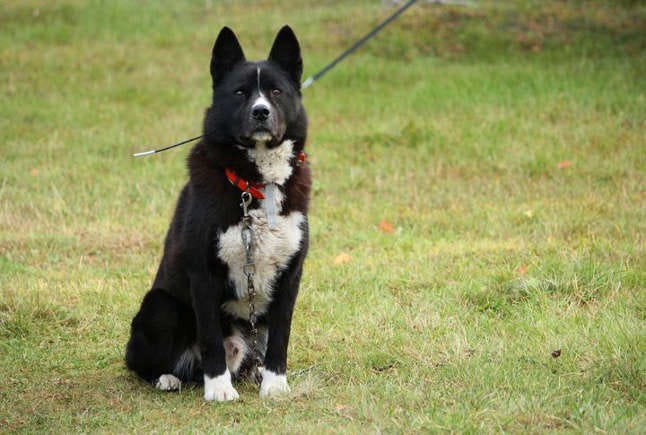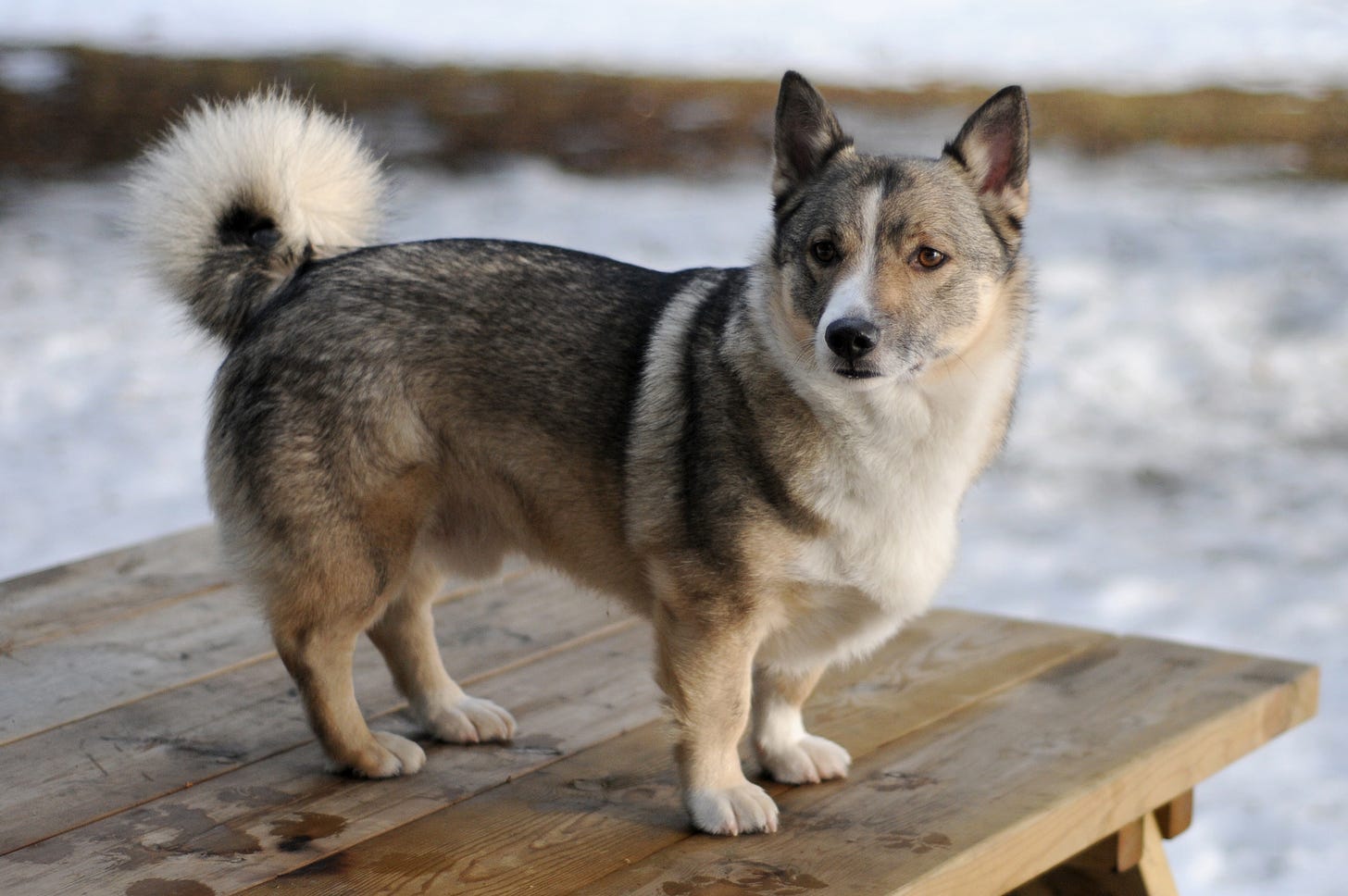A recent Viking-age boat burial was uncovered on Senja Island in northern Norway, containing the remains of a woman, alongside high-status goods and a companion: her dog. How were our four-legged friends seen in the Viking and medieval Norse world? Spoiler alert: dogs weren’t just barking background noise, they were pets in the full, emotional, human-companion sense of the word. Domesticated to fill lives, dogs in the Icelandic sagas are full-blown characters, often displaying loyalty, emotional intelligence, and even a pinch of moral judgement.
Shadowing the heroes
They’re more than animals; they’re something in-between, straddling that curious boundary between human and non-human. Like today’s pets, medieval dogs weren’t just “there”; they meant something. They watched, listened, judged, loved. And considering dogs have been living alongside humans for at least 13,000 years, it’s no surprise they took on some of our favourite human traits - loyalty, courage, perceptiveness - making them perfect mediators between our world and the wild.
But dogs weren’t all snuggles and soulful eyes. In medieval Scandinavia, they were hard-working beasts, too. They herded sheep, guarded homes, hunted game (at least on the mainland), and generally pulled their weight. Alongside horses, they weren’t just practical companions, they were emotional ones too. That’s why their deaths in the sagas can hit just as hard as any human loss.
And when it comes to status, let’s talk numbers. The Frostaþingslǫg law code actually lists how much you’d owe if you killed someone’s dog - and yes, it’s breed-specific. Top of the prestige pack? The kofanrakki, or lap-dog, worth a hefty twelve aurar. That’s triple the price of a sleek mjóhundr (greyhound), and way above the veiðihundr (hunting dog) or nautahundr (cattle dog), who came in at just four. Guard dogs were worth a single, humble aura. But why was the lap-dog so pricey? It didn’t herd, hunt, or guard - it simply looked cute and screamed “I’m rich.” Think of it as the medieval equivalent of a designer handbag.
Interestingly, you won’t find lap-dogs prancing around in the native Icelandic sagas - they're imported from the glitzy world of translated continental romances, like Tristrams saga ok Ísöndar, where dogs are sparkly, dramatic, and definitely not chasing sheep.
In homegrown Icelandic sagas, the best dogs are big, brave, and brilliant. They don’t sit in laps - they charge into battle, protect homesteads, and fiercely love their humans. Let’s take Sam (Sámr) from Njáls saga. This dog isn’t just “man’s best friend” — he’s described as being “no worse a companion than a valiant man.” He’s got the wit of a person, barks only at enemies, and sees right through people’s intentions. He’ll gladly give his life for his master, and spoiler: he does.
When the villainous Mörd hatches a plan to kill Gunnar, he warns his crew they’ll need to deal with Sam first. Thorkell, one of the attackers, tries to lure the dog away, but Sam isn’t fooled. He leaps up, bites Thorkell in the groin (yep), and only dies after being struck in the head with an axe. His death isn’t just sad, it’s epic. He howls with such fury and pain that it's described as unlike anything anyone had ever heard before.
Sam dies like a true saga hero: loyal, brave, perceptive to the end. He’s a dog, sure, but in that moment, he’s more than that. He’s the last, tragic line of defence.
And then there’s Snati from Bárðar saga Snæfellsáss. If Sámr from Njáls saga is your valiant saga-sidekick, Snati is basically a one-dog army with the strategic mind of a general and the soul of a saga hero. Gifted to Gestr by a mysterious tröll-woman named Hítr, Snati is no ordinary mutt. He’s huge, gray, and has the battle skills of four brave men. Four.
We first see Snati in action when the trolls Kolbjörn and his lovely mother Skrukka (read: monstrous, deadly ogress) come rampaging through the valley. Gest points Snati toward the target, and the dog gets the assignment. Not only does he understand what to do, he executes it like a siege engineer. He climbs a crag, starts chucking boulders down like a one-canine catapult, and in a final flourish, drops a crushing stone right onto Skrukka’s back. Boom. Crone-slaying accomplished.
And he’s not done yet. Snati sticks with Gest through haunted mounds and magical mayhem. In one chilling episode, Gest descends into a barrow belonging to the undead King Raknar - dangling on a rope held by men who quickly lose their nerve and flee. Who doesn’t flee? A single priest... and Snati. Man’s last friend.
Later, as they sail away from Greenland, Gest needs to find a hidden reef. So who dives straight into the freezing surf, guided only by his uncanny understanding of Gest’s need? You guessed it. Snati plunges into the waves, locates the reef … and tragically never returns. Raknar’s dark magic claims him, and Snati drowns, sacrificing his life for his master. Gifted by a supernatural being, loyal to the death, and smarter than most humans, Snati isn’t just a dog; he’s a saga unto himself.
But he’s not the only epic pooch on the medieval stage.
Next up is Vígi, the heroic hound of Óláfr Tryggvason. Unlike Snati, Vígi has more practical roots, he's a prized hjarðhundr (herding dog) from Ireland. But don’t let that fool you: he’s clever, capable, and just as saga-worthy.
Vígi enters the scene during a classic power move. Olaf, mid-raid in Ireland, allows a farmer to reclaim his cattle if he can identify them. The farmer unleashes his dog into the massive herd, and Vígi, displaying Sherlock-level deduction skills, sorts out the right cattle with flawless precision. Impressed, Olaf takes the dog as a gift and names him Vígi, “the fighter.” Foreshadowing much?
The name pays off during the legendary sea-battle against Raudr inn rammi and Thórir hjörtr. When Þórir makes a run for it, Olaf unleashes his best line: “Vígi, tak hjǫrtinn!” (“Vígi, get the hart!” — it’s a pun, because hjǫrtr means both the man and a deer). And Vígi gets it. He chases down Thórir, bites into him, and forces him to stop, just long enough for Olaf to deliver a fatal spear throw. Vígi’s wounded, but not before he proves his mettle as both herder and hunter.
His loyalty doesn’t end there. In Oddr Snorrason’s Saga Óláfs Tryggvasonar, we get one final, gut-wrenching glimpse of Vígi’s devotion. When a retainer informs him of Olaf’s death, Vígi doesn’t just mope, he howls, climbs onto his master’s burial mound, lies down... and dies. Like the faithful companions buried with warriors for the journey to the afterlife, Vígi chooses to follow his king beyond the veil.
Four-legged spirits
So what do Snati and Vígi tell us about dogs in the sagas? These aren’t background animals. They’re partners, warriors, minds of their own. They understand speech, execute tactics, show loyalty, grief, and even supernatural awareness. Sure, they might be a little too clever to be “typical” dogs, but that’s kind of the point. These saga hounds are elevated: not just beasts, but bridges between the human and the wild, the living and the dead. Epic dogs for an epic world.
In saga literature, dogs aren’t just padding the margins, they’re practically four-legged sidekicks with a spiritual passport. The bond between dog and human in the sagas isn’t just emotional or practical; it runs deep, right into the mythic bloodstream of Norse culture. These dogs don’t just follow their people, they reflect them.
Think of them as living, breathing fylgjur, those mysterious dream-spirits that appear in animal form to reveal a person’s fate or inner nature. Like the fylgja, the dog shadows the human in ways that are both symbolic and real. But where the fylgja appears in dreams, dogs are fully present in the waking world - barking, biting, herding, and dying in defence of their companions.

Take Sam, for example. His death isn’t just tragic - it’s charged with eerie symbolism. When Gunnar awakens and immediately knows that his dog is dead, there’s no dream to guide him, no ghostly vision. He just knows. That uncanny awareness echoes the old logic of the fylgja: when the animal dies, the human is not far behind. Gunnar even says so himself, mournfully declaring that little time will pass between Sámr’s death and his own. It’s not just companionship; it’s a spiritual bond. This metonymic link - where the dog is the human, in a way - shows up again and again. The best dogs in the sagas serve the best men: noble heroes, brave kings, saga-protagonists with tragic destinies and iron wills. The loyalty and courage of the animal mirrors that of the master. It’s no coincidence.
In Hrólfs saga kraka, we meet another legend: Gramr, a massive hound belonging to King Hrolf. Now, gramr in Old Norse means "wrath" - fitting - but it’s also a poetic word for "king" or "warrior." Dual symbolism baked into his name. When the malicious Swedish King Adils sends a monstrous tröll-boar to murder Hrolf and his men in their sleep (as you do), Gram doesn’t hesitate. At Bödvar Bjarki’s command, the dog launches himself at the beast and - despite Bödvar’s own superhuman strength — it’s Gram who takes down the boar. The king’s dog defeats the troll-king’s boar. Animals as avatars of their masters.
But not every Gram is so heroic. In Þorsteins saga Víkingssonar, we meet another dog of the same name, and this one serves an outlaw and antagonist - the villainous Fullafli. Just like his master, this one is vicious and formidable, attacking with supernatural strength. He bites into Thorir’s calf before Thorir finally manages to wrestle him down and kill him. Same name, same species, completely different moral alignment. The dogs in these stories are not just fierce; they’re moral compasses on four legs.
And speaking of fearsome canines, one can’t forget the mythic Garmr, the hellhound who, according to Norse myth, will face the god Týr during Ragnarök. Like Gram, Garm is all rage and fate, but on a cosmic scale. A dog not just tied to one man, but to the end of the world itself.
Of course, saga dogs weren’t all about battles and omens - they had jobs too. Guardianship, for one, was a serious task. In Íslendinga saga, we hear of Haf the steward and his faithful guard dog, who always slept at the foot of his bed. Until one night, the dog mysteriously vanishes. The next day? Haf’s murdered. Coincidence? Absolutely not. The implication is clear: the attackers got rid of the dog first because they knew its bark could blow their cover. Even the sound of a dog was enough to derail an ambush.
This practical dimension was reflected in law as well. The legal code Grágás (Grey Goose) didn’t treat dogs as mere property, it made their owners responsible for their actions. If your dog took a nip out of someone’s cartilage, tendon, or, heaven forbid, caused a death? You could be facing full outlawry. That’s not just a fine, that’s total banishment. The dog’s bite had legal weight, and so did your responsibility.
So whether we’re talking supernatural companions, heroic fighters, tragic martyrs, or just very competent sheepdogs, saga dogs live on the cusp of the human and the animal, the domestic and the mythic. Like living fylgjur, they trail their humans not just in space, but in fate. And when they die, the story doesn’t just lose a pet, it loses a part of its soul.
In life and death
Dogs weren’t just man’s best friend in the Viking Age - they were warriors’ companions, spiritual sentinels, and sometimes, even sacrifices. Across the Scandinavian archaeological landscape, their bones lie beside kings and warriors, buried with reverence, honour, and mystery.
Take Valsgärde, one of the richest grave sites of the Viking world. Here, roughly half the Viking Age graves contain positively identifiable dog remains, at least 20 individual animals. That’s a striking number, especially given the variation across time. In the earlier Vendel Period, people seemed to prefer multiple dogs per grave, a sort of elite entourage. But in the Viking Age proper, the standard shifted: one dog, large and loyal, laid to rest beside its master. Size mattered. Most of these dogs were robust animals, chosen not just for companionship but likely for their practical roles — guardians, hunters, perhaps even battlefield comrades. And their burials, intact and deliberate, followed the customs of Late Iron Age Sweden, where humans and animals were sent into the earth in carefully staged funerary theatre.
The parallels between Valsgärde and the nearby cemetery of Vendel are impossible to ignore. The dogs, the ship burials, the grave goods - they all point to a shared elite funerary culture, a kind of pan-regional aristocratic performance of power and memory. And yet, for all the patterning, the exact meaning of the dog’s presence in these graves defies full reconstruction. Was the dog a symbol? A sacrifice? A soul-guide? Perhaps all at once. The answer likely lies at the intersection of the practical, the social, and the deeply personal. What we can say with some confidence is this: most of these dogs were intended to follow their humans into the next life, just as they had followed them in this one.
This belief wasn’t just buried in the ground, it was carved in stone. Scandinavian rock art shows dogs participating in both hunting and ritual ceremonies, their roles extending beyond the field into the sacred. Adam of Bremen, writing around 1050–1085 CE, confirms that dogs were among the sacrifices at the great Temple of Uppsala, offered to Odin, Thor, and Freyr, gods who ruled over death, fertility, and war. In many great Viking ship burials, we find dog skeletons interred alongside horses and cattle, sometimes in twos or threes. These weren’t just beasts of burden. They were beings of ritual importance, symbols of status, service, and spiritual preparation.
Even in Iceland, a land dogs had to be imported to, we find canine remains carefully placed in graves, sometimes beside their masters, sometimes alone. These were not mere pets. They were companions of identity. Owning, training, and keeping a dog, especially a working dog, was expensive and time-consuming. It was a marker of wealth, authority, and cultural belonging.
The breeds themselves tell us more. Hunting dogs were robust, agile, and fearless - such as the Norwegian Elkhound, Karelian Bear Dog, and Finnish Spitz. Herding dogs like the Lapphund, Vallhund, and Icelandic Sheepdog helped manage livestock in the harsh northern landscapes. These were not decorative animals. These were tools of survival, prized and respected.
They were also deeply symbolic. Some scholars even suggest that the prominence of dogs in death implies their presence in the Norse afterlife itself. Take the Tjängvide stone from Gotland. This image-rich runestone shows a fallen warrior entering the afterlife, greeted by a Valkyrie offering a cup of mead. Just behind her stands what looks unmistakably like a dog, presumably the warrior’s own, awaiting reunion in the halls beyond death.
Does this mean dogs go to Valhalla? Maybe. But this isn’t a Norse All Dogs Go to Heaven. The dog's place is with its person, wherever that may be. In life. In battle. In death. In myth.








This is not only fantastic but personally timely, as I have been mulling the idea of writing about a Viking warriors dog soon! Thanks for the inspiration, what a coincidence. 🤘
This is eerie! We both released dog pieces within 10 minutes of each other. (Excellent article, btw!)